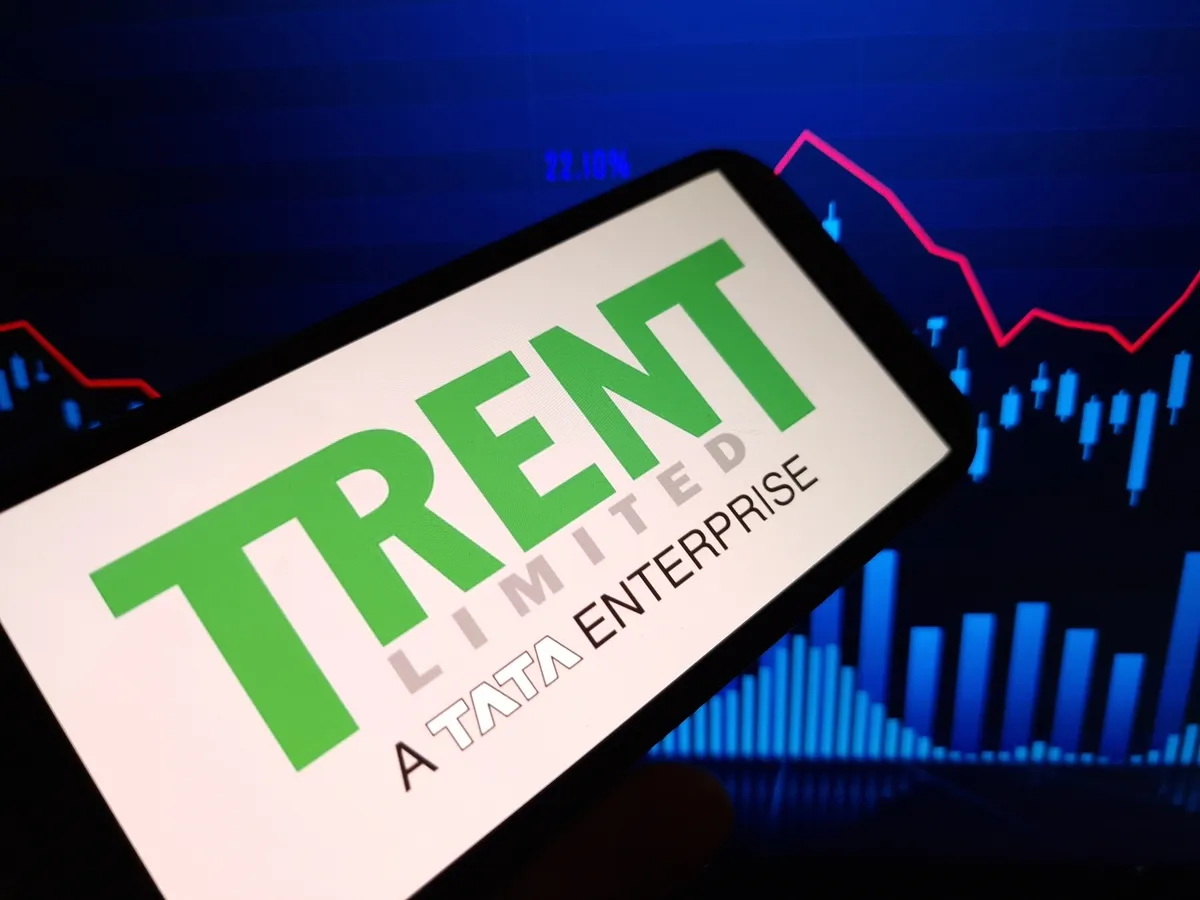Top 9 Stocks to Buy Now
The stock markets experienced a surge of volatility last week, marked by the Sensex dropping over 4.8%. A rise in oil prices, coupled with increasing tensions in the Middle East, has unsettled investors, contributing to the market’s downturn.
On a global scale, the US Federal Reserve’s significant 50-basis point interest rate cut in September 2024 has sparked positive sentiment. This move is perceived as a potential shift toward expansionary or easier monetary policies by other central banks around the world. Reflecting this optimism, the MSCI World Index hit an all-time high on 27 September, while the MSCI Emerging Market Index reached a level not seen since March 2022.
Despite these external factors, India’s Nifty 50 and BSE Sensex have outperformed many global indices during the first nine months of 2024. Of the 2,792 listed stocks on Indian exchanges, 77%—or 2,147 stocks—delivered positive returns. A notable 51% of these stocks, amounting to 1,416, even outperformed the Nifty 500 Index. This broad-based growth is underpinned by India’s strong macroeconomic fundamentals, a significant inflow of liquidity from domestic institutional investors (DIIs), and a recent rebound in foreign portfolio investments (FPIs).
Between January and September 2024, domestic mutual funds injected over Rs.2.6 lakh crore into the equity market, while FPIs contributed more than Rs.1 lakh crore during the same period. This contrasts with the previous year, where mutual fund inflows stood at Rs.1.1 lakh crore and FPI investments were slightly higher at Rs.1.2 lakh crore. The combination of domestic and foreign capital has played a pivotal role in sustaining market growth.
From a macroeconomic standpoint, expectations of increased government spending in the coming months, along with a recovery in private and urban consumption, have buoyed investor sentiment. Other positive factors include India’s lowest government debt increase among large markets, low household leverage, contained bond yields, and the highest GDP growth rate among key equity markets. These elements paint a compelling picture for the long-term attractiveness of Indian markets.
However, there are concerns about the market’s high valuations. The BSE Sensex currently trades at a 12-month forward PE of 23.7x, which is higher than its counterparts in the US, Europe, and Asia. Historically, such elevated valuations have led to pullbacks or periods of lower returns. CLSA’s India bull-bear index is at a heightened bullish level, which may indicate a near-term correction. Additionally, bond-equity valuations suggest that returns over the next year or two may not be as robust as they have been recently.
Certain risks could further impact market performance. A recent report by CareEdge Ratings highlighted concerns about declining passenger vehicle sales and rising inventories in August. If the slowdown in auto sales persists, it could have broader implications for economic growth. Other challenges include increased dumping by China and the potential for trade disputes, which could hurt Indian manufacturers.
Geopolitical risks also loom large, particularly with rising tensions in the Middle East. These uncertainties, along with high market valuations, have led experts like Narendra Solanki, Head of Fundamental Research at Anand Rathi, to advise caution in the short term. With external risks such as geopolitical tensions and the upcoming US elections, there is likely to be continued volatility in the markets.
Adding to this cautious outlook is the expectation of a tepid performance by India Inc. in the second quarter of the financial year. Analysts are forecasting an average corporate performance due to factors like demand headwinds, a delayed festive season, and prolonged rainfall. Amnish Aggarwal, Director of Institutional Research at PL Capital, notes that these factors could weigh on the markets in the short term.
Stock Pick
In this selection process, certain stringent criteria were applied to identify stocks that could potentially outperform the market. These included:
Market Cap Requirement: Stocks with market capitalizations greater than Rs. 100 crore were considered.
Sales Growth: The sales growth for 2023-24 needed to be higher than the industry median.
Price-to-Earnings (PE) Ratio: The trailing twelve months (TTM) PE of the stock had to exceed the TTM PE of the Nifty 50 index.
EBITDA Margins: Stocks with EBITDA margins for 2023-24 above the industry median were selected.
Net Profit Margins: Similarly, the net profit margins of the stock in 2023-24 needed to be higher than the industry median.
Return on Equity (RoE): RoE for 2023-24 was required to surpass the industry median RoE.
Debt-to-Equity Ratio: The total debt-to-equity ratio for 2023-24 had to be lower than the industry median.
Analyst Coverage: Only stocks covered by at least five analysts were considered.
Buy-Hold Ratings: Stocks with over 80% of their ratings being either “buy” or “hold” were included.
1. Indian Hotels Company, Capitalizing on Structural Tailwinds
Indian Hotels Company is one of the key beneficiaries of the strong recovery in the hospitality sector. Several factors are driving this positive outlook, including a demand-supply mismatch in the travel industry, with demand expected to outpace supply, especially as corporate and inbound travel continues to recover.
Despite muted performance in the June quarter, driven by the heatwave and election-related disruptions, the company is set for double-digit revenue growth in 2024-25. Strong demand across both the corporate and leisure travel sectors, coupled with a surge in MICE (Meetings, Incentives, Conferences, and Exhibitions) activities and wedding-related events, will likely fuel its performance in the near term.
Additionally, the company’s new ventures, including Ginger, Qmin, and amã Stays & Trails, are expected to grow by 30-35%, while reimagined businesses like Taj SATS and The Chambers are predicted to see 15-20% y-o-y growth. Indian Hotels has also announced its entry into the branded residences market in Chennai, which is expected to further boost revenues.
On the international front, the company’s US portfolio is likely to gain momentum after the November elections. With 25 new hotels set to open in 2024-25, the company’s aggressive expansion strategy is on track. Analysts expect average room rates (ARR) to improve, buoyed by strong demand, cost optimization initiatives, a steady pipeline of new rooms, and a focus on inorganic growth opportunities. These factors, combined with a healthy balance sheet, make Indian Hotels a strong contender for long-term growth.
2. Affle (India), Riding on Digitization
Affle (India), a global technology company, has shown strong growth prospects thanks to the rapid digitization wave, which has been supported by government initiatives, widespread Internet access, rising smartphone usage, and affordable data plans. Mobile advertising, in particular, has seen significant growth, driving Affle’s business forward.
In the June quarter, Affle recorded a 27.8% y-o-y growth in revenue and a 30.6% y-o-y increase in net profit, showing its resilience across multiple business verticals and geographic markets. Notably, revenue from emerging markets grew by 24.8%, while developed markets saw a 36.9% increase. Both emerging and developed markets present significant growth opportunities, driven by a recovery in Real Money Gaming (RMG) clients in India and a large addressable market in North America and Europe.
Affle’s management is concentrating on targeting specific verticals in developed markets to capture long-term growth opportunities. With a focus on operating profit margin improvements, the company expects 20% revenue growth in 2024-25. Stable employee expenses should also provide operating leverage benefits, further supporting margin expansion.
The successful integration of platforms from acquisitions will create strategic synergies, strengthening Affle’s position in the market. Key positives cited by analysts include the continued growth of mobile advertising spend, Affle’s differentiated RoI-linked revenue model, its premiumisation strategy, and the growing demand for digital marketing across e-commerce and video-based platforms. Additionally, Google’s plans to phase out third-party cookies will create new opportunities for the company to refine its digital marketing offerings.

3. Trent, Retail Powerhouse with Strong Growth Drivers
Trent, a leader in India’s retail sector, has consistently delivered strong performance, supported by its excellent execution capabilities, integrated supply chain, and customer-centric innovation. In the June quarter, the company posted impressive growth figures of 57% in revenue and 131% in net profit. Despite facing demand and consumption challenges, Trent’s profitability continues to improve, thanks to cost control measures and operating leverage benefits.
Key performance drivers include store additions, strong performance of Zudio, and double-digit like-for-like (LFL) growth. The company’s grocery business, Star Bazaar, also showed growth, particularly in fresh foods and private-label products. Emerging categories such as beauty and personal care, innerwear, and footwear have gained significant momentum.
Moreover, Trent is investing heavily in technology upgrades across its value chain, which will further enhance operational efficiency and customer experience. Analysts point to Trent’s industry-leading store economics, consistent growth, and improvement in return ratios as key positives. A Systematix report suggests that Westside’s growth momentum will continue, driven by accelerated store openings, modernized stores, and limited competition in the fast-fashion segment, particularly outside metros and tier-1 cities. Additionally, Zudio’s aggressive expansion into tier 2/3 cities offers significant growth potential, helping Trent sustain its premium valuations.
4. Mankind Pharma, Strengthening its Healthcare Leadership
Mankind Pharma has emerged as a strong player in the healthcare sector with its diversified presence across chronic, acute, and consumer healthcare segments, alongside its entry into niche therapeutic areas with high barriers to entry and high margins. During the June quarter, the company reported double-digit growth in both revenue and net profits. The domestic pharmaceuticals segment showed 9% growth, driven by strong demand for cardiac and anti-diabetes therapies, while exports surged by 62%, supported by US generics. However, the consumer healthcare segment experienced a slight 1% decline year-on-year.
Analysts are confident that Mankind’s multi-faceted growth strategy will continue to drive success. Over recent years, the company has focused on launching differentiated products and expanding into new markets, including investments in biosimilars, pet food, and Ayurveda. The acquisition of BSV has strengthened Mankind’s superspecialty portfolio, giving it access to a specialized R&D tech platform, in-house complex manufacturing capabilities, and broader institutional reach.
A report by Motilal Oswal in August 2024 indicates key growth drivers such as expansion in product offerings across major therapies, leveraging capital, further growth in chronic therapies, and expansion of its footprint in metro and tier-1 cities. With these strategies in place, Mankind is well-positioned to capitalize on future opportunities in the healthcare sector.
5. Computer Age Management Services (CAMS), Riding the Mutual Fund Wave
CAMS, a leading technology-driven financial infrastructure and services provider, is benefitting from the rapid growth in India’s mutual fund industry, increasing digitization, and the rising participation of retail investors via Systematic Investment Plans (SIPs). With a market share of 68% in the mutual fund industry, CAMS services Rs. 44.3 lakh crore in Assets Under Management (AUM), out of the total Rs. 66 lakh crore mutual fund AUM as of August 2024.
In the June quarter, CAMS reported 41.3% net profit growth year-on-year, driven by increased non-MF business and a higher share of equity AUM in its mutual fund portfolio. While revenue from the mutual fund business remains robust, the company aims to grow its non-MF business contribution from 13% in 2023-24 to 20% by 2026-27. Growth in the AIF (alternative investment fund) segment, expansion of CAMSPay operations into new sectors like education and cards, and ePolicy conversions in CAMSRep will further drive non-MF revenue.
Analysts point to several key positives, including automation across the process value chain, the introduction of AI throughout CAMS’s operational stack, and the redesign of its transfer agent platform using Google Cloud. Opportunities in the KYC process for capital markets and growing prospects in the insurance sector (through Bima Central) also present attractive growth avenues for CAMS.

6. Triveni Turbine, Strong Order Inflows and Export-Led Growth
Triveni Turbine, a key player in the industrial steam turbine manufacturing sector, enjoys robust growth prospects, thanks to a healthy pipeline of orders from both domestic and international markets. Internationally, sectors like renewables are expected to drive order inflows, while steel, cement, chemicals, sugar, distilleries, and paper and pulp industries are key demand drivers in the domestic market.
For the June quarter, the company posted 23% revenue growth and a 32% rise in PAT year-on-year. The company’s order book, valued at Rs. 1,730 crore, grew by 23% y-o-y, with export orders surging by 74%, although domestic orders remained relatively muted at 2% due to election impacts. However, management is optimistic about the domestic order inflows, citing a strong enquiry pipeline from end-user industries.
Margins are expected to stay stable, driven by the growing share of higher-margin exports, aftermarket sales, and stable commodity prices. Additionally, Triveni Turbine is focused on R&D to stay competitive globally, with plans to introduce new products with wider applicability.
A recent report from Motilal Oswal highlights the company’s international expansion, product diversification, aftermarket business scale-up, and focus on innovation as key positives. The report projects a CAGR of 29% in revenue and 32% in PAT for the company over 2023-24 to 2026-27.
7. UltraTech Cement, Cement Demand on the Rise, Focus on Cost Reduction
UltraTech Cement, one of India’s largest cement players, is said to benefit from increasing construction activities and traction in the infrastructure and housing sectors. According to its 2023-24 annual report, cement demand is expected to grow by 7-8% in 2024-25. However, the June quarter presented mixed results: while revenue met estimates, EBITDA and net profit fell short due to weak realizations and pricing pressure.
The demand challenges are likely to persist into the September quarter, but a pickup is expected post-monsoon, potentially boosting demand in the third quarter of 2024-25. UltraTech has also committed to cost savings by increasing the share of green power, adopting alternative fuels, reducing lead distance, and improving operating leverage—all of which will aid profitability.
The acquisition of India Cements is set to enhance UltraTech’s market position in the southern markets. A recent HDFC Securities report remains optimistic, noting that the company’s long-term outlook remains positive, thanks to its focus on cost reduction, potential declines in fuel costs by 2025-26, and growth from industry consolidation and ongoing capacity expansions.
8. Century Plyboards (India), Strong Franchise Amongst MDF and Laminate Challenges
Century Plyboards, a leader in the plywood industry, is well-positioned to benefit from multiple growth drivers, including increasing activity in the real estate sector, more commercial projects, rising private capex, and a shift in consumer preference toward branded products. The company’s MDF (medium-density fibreboard) segment is also seeing growth due to the rising use of ready-made and easy-to-install furniture.
However, in the June quarter, Century Plyboards faced challenges, particularly in its MDF and laminates segments, due to rising input costs and pricing pressure. While the plywood segment performed well, driven by an expanded distribution network and market share gains, the MDF segment struggled due to low operating rates at its new plant in Andhra Pradesh.
Looking ahead, the management expects demand improvement in the future, driven by the growing housing market. Volume growth targets remain unchanged at 10% for plywood, 20% for laminates, and over 40% for MDF in 2024-25. The ramp-up of capacities at the Andhra Pradesh plant, eased MDF imports after the BIS implementation (from February 2025), recent price hikes, and stabilization in timber prices by 2025-26 are all expected to help improve margins.
A recent HDFC Securities report is optimistic about the company’s strong franchise (with pan-India distribution, aggressive marketing, and a wide range of SKUs), leadership in most wood segments, healthy return ratios, and a strong demand outlook.
9. Venus Pipes and Tubes, Riding on Industrial Demand and Capacity Expansion
Venus Pipes and Tubes, a leading manufacturer of stainless steel pipes and tubes, is well-positioned to benefit from rising demand across multiple sectors, including oil and gas, fertilisers, pharmaceuticals, engineering, and chemicals. The company is gaining market share in the export market, driven by strong international demand, while in the domestic market, import substitution is enabling it to capture market share from unorganised players.
For the June quarter, Venus Pipes reported an impressive 33.7% year-on-year revenue growth and 73.8% growth in EBITDA. The performance was bolstered by a significant increase in exports, an improved product mix, and the benefits of backward integration. These factors helped the company deliver strong results despite challenging market conditions.
Venus Pipes is on track with its capacity expansion, aiming to grow its current 4,800 tonnes per annum production capacity to 7,200 tonnes per annum by the end of 2025. To support this growth, the management has announced a capital expenditure (capex) of Rs. 175 crore, which will be used to diversify into more profitable segments, including fitting solutions, welded tubes, and titanium tubes. This strategic move is expected to further enhance the company’s profitability and market presence.
The company’s cost-saving initiatives, particularly through backward integration and the ability to leverage operating efficiencies due to increased capacity, are expected to sustain profitability in the future. These efforts are not only driving down costs but are also positioning Venus Pipes as a strong player in the highly competitive stainless steel industry.
A recent report by Ambit Capital accentuates the company’s potential, indicating that Venus Pipes is set to be a key beneficiary of the industrial capex cycle. The report notes that Venus is building strong channel profiles to ensure long-term growth, extending beyond its traditional market base. Analysts estimate a CAGR of 29% in revenue and 31% in EBITDA over the period 2023-24 to 2026-27, reflecting the company’s strong growth prospects.










